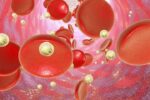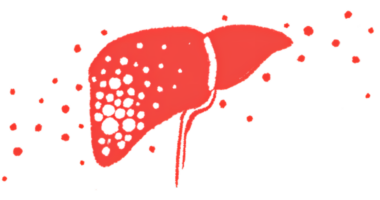Cyclophosphamide therapy may be better option in some AHA cases
Chemo drug may work better than rituximab in patients with poor prognosis

Added to steroids, rituximab seems to be as safe and effective as cyclophosphamide therapy at controlling bleeds and wiping out antibodies against clotting factor VIII (FVIII) in adults with newly diagnosed acquired hemophilia A (AHA), according to a Phase 3 clinical trial.
However, data from the CREHA trial (NCT01808911) also showed that cyclophosphamide — a chemotherapy medication taken by mouth, which also has a lower cost than rituximab — may be a better option for patients who may have a poorer prognosis due to high levels of those antibodies.
“Cyclophosphamide and rituximab showed similar efficacy and safety,” the researchers wrote. However, “as first line [treatment], cyclophosphamide seems preferable, especially in poor prognosis patients, as [it’s] administered orally and [is] less expensive.”
The trial’s findings were reported in “Cyclophosphamide vs rituximab for eradicating inhibitors in acquired hemophilia A: A randomized trial in 108 patients,” a study published in the journal Thrombosis Research.
Trial tested use of rituximab as add-on treatment in AHA
In acquired hemophilia A, known as AHA, the body fails to recognize FVIII, a blood-clotting factor, as part of itself. As a result, immune cells produce antibodies, or inhibitors, that attack circulating FVIII as if it were a threat, preventing it from working normally. This can lead to excessive bleeding.
According to a team of researchers in France, where the CREHA trial took place, “the risk of bleeding persists as long as FVIII is low.” For this reason, “once the diagnosis is achieved, immediate eradication of antibodies is recommended.”
This is usually done with steroids, which suppress the activity of the immune system; such therapy can be given alone, or alongside cyclophosphamide to shorten the time to remission. Rituximab, which depletes antibody-producing B-cells, has also been suggested as second-line treatment.
The CREHA study compared cyclophosphamide and rituximab, both given alongside steroids, for the treatment of newly diagnosed AHA. Cyclophosphamide is taken by mouth, while rituximab is given directly into the bloodstream (intravenously) by infusion.
The study included 108 patients, with a median age of 78, who were randomly assigned to receive daily doses of the steroid prednisone alongside either cyclophosphamide or rituximab. Cyclophosphamide was given daily for six weeks, while rituximab was administered once weekly for four weeks.
The primary goal of the study was to see how many patients achieved complete remission after 18 months. Complete remission was defined as having inhibitor antibodies at less than 0.6 Bethesda units per milliliter (BU/mL) and normal circulating FVIII levels (more than 50 international units per deciliter), without symptoms of bleeding.
More patients on cyclophosphamide therapy achieved complete remission
Altogether, after 18 months of treatment, 39 patients (67%) in the cyclophosphamide group and 31 (62%) in the rituximab group were in complete remission. The median time to complete remission was similar in both groups (46 vs. 48 days).
Among 53 patients with poor prognosis at the start of the study — defined as those in whom inhibitor antibody levels were higher than 20 BU/mL, and FVIII activity levels were below 1% — complete remission was more frequently achieved in those treated with cyclophosphamide than in those given rituximab (about 79% vs. 48%).
The proportion of patients who had experienced at least one severe bleeding episode after six months of treatment was similar in both groups (29% vs. 24%). All patients received on-demand treatment to control bleeding when needed.
The proportion of patients who experienced severe infections, most frequently in the lungs or urinary tract, also was similar (about 33% vs. 40%). Yet, the proportion of patients with two or more infections in the rituximab group was much higher than that of the cyclophosphamide group.
All patients received prednisone for at least six weeks, with gradual tapering for six weeks. Those who experienced severe infection had received higher cumulative doses of prednisone, suggesting steroids should be reduced as much as possible to avoid infection.
“It is crucial to reduce total steroid intake in AHA as much as possible,” the researchers wrote.
Efficacy and safety overall were similar for both cyclophosphamide and rituximab. However, the researchers concluded that “cyclophosphamide seems preferable in patients with low FVIII” and higher antibody levels — namely, those individuals with a poorer prognosis.







